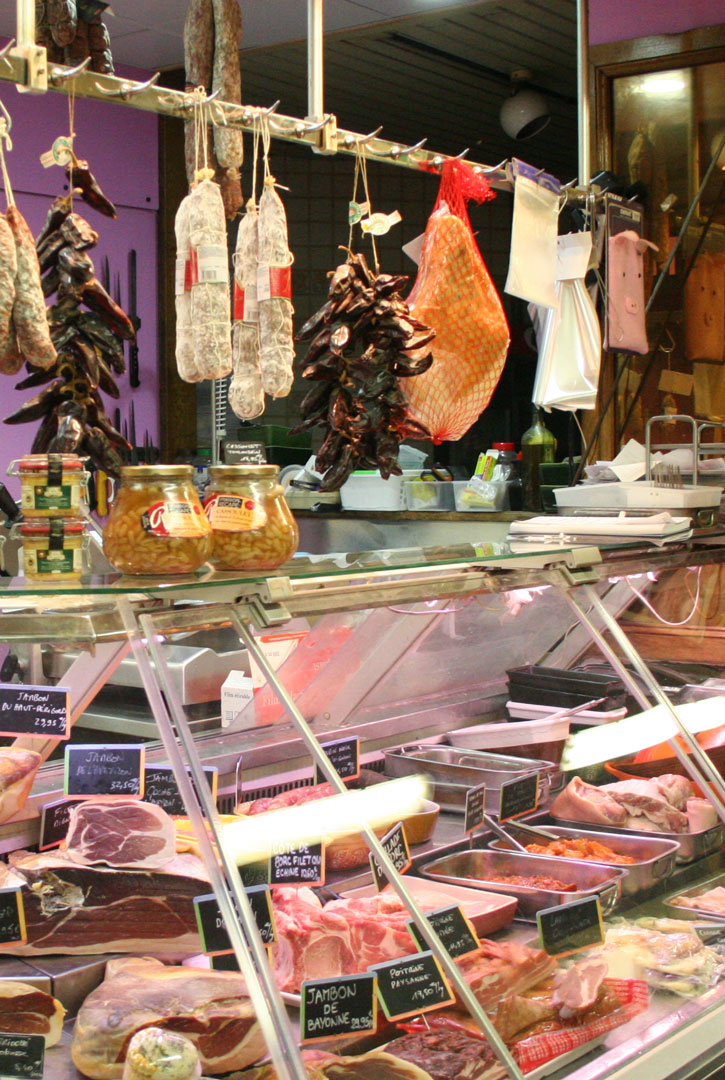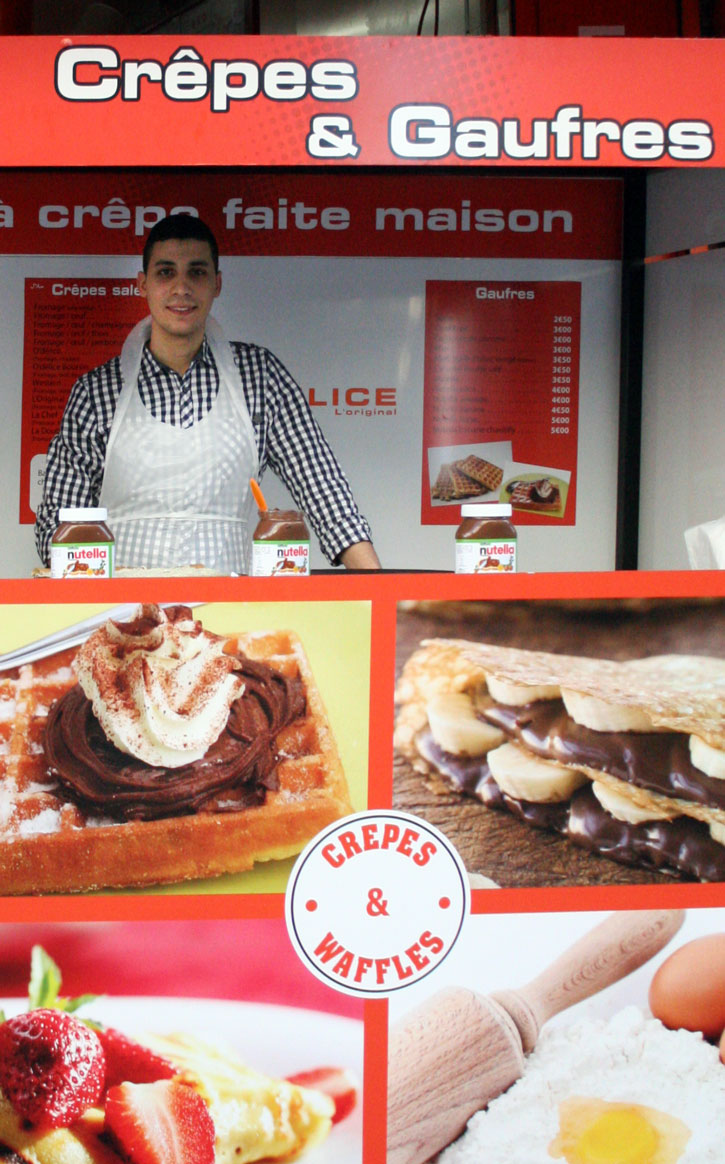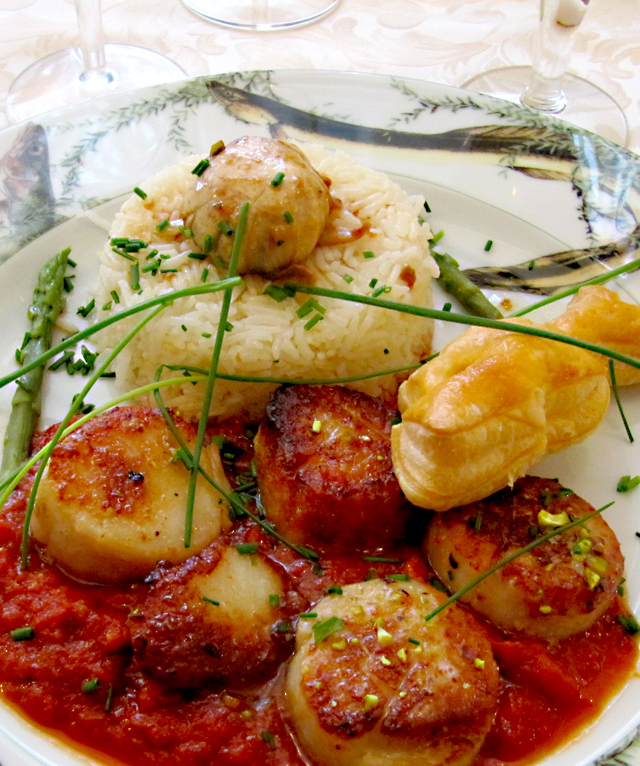Café and brasserie menus across l’Hexagone still look as if they were pulled from the pages of Julia Child’s mid-20th century culinary classic Mastering the Art of French Cooking, brimming with meat-based dishes smothered in creamy sauces—but there’s more to contemporary French food than beef bourguignon. Here are a few of the most common edible possibilities you’ll encounter in restaurants, outdoor markets, and grocery stores from Mont St. Michel to Montpellier.
This all-encompassing term is francophone code for “nibbly things made with pork”. When ordering charcuterie at a French wine bar or café, you’ll be presented with a wooden plank called a planche decorated like an artist’s palette with mounds of ham, cured salami, dried sausage, and slices of paté de campagne. A basket of sliced bread is the standard accompaniment. These are nibbled during apéro hour, that lovely afternoon period between lunch and dinner best spent sipping a glass of wine with friends at a sunny terrace café.

Photo © Aurelia d’Andrea.
This classic dish strikes fear into the hearts of many visitors to France, and not just because steak tartare really is just a humongous pile of raw meat, but because it’s a humongous pile of raw meat with a raw egg on top. At most restaurants, the dish is delivered to your table with a bottle of Tabasco sauce, and sometimes with add-ins for seasoning your meat to your own tastes, including minced onions, mustard, and pickles. If you lose your courage once your meal arrives, the accompanying frites will make a satisfying snack.
Whether slathered in Nutella, smeared with melted butter and a sprinkling of sugar, or covered in cheese and a slice of ham, the thin pancake known as the crêpe holds a beloved spot in the hearts of the French. Many French kitchens are equipped with their very own electric crêpière, which comes with a little wooden rake for spreading the batter evenly across the pan. The Breton galette, made with buckwheat flour, is also popular but more common in its place of origin, Brittany.

Crêpes for sale at a street stand. Photo © Aurelia d’Andrea
Culinary political correctness aside, don’t be surprised to see veal on restaurant menus in every corner of the country. This plat familial consists of calf’s meat cooked in a creamy white sauce studded with carrots and champignons de Paris—otherwise known as button mushrooms. Besides being a favorite dish in French homes, it’s also a regular fixture in school cantines. To see what else French schoolchildren are eating, look for the monthly lunch menus posted outside public school doors.
This dish is simply a fancier-sounding version of that old classic, shepherd’s pie. Most often prepared in a casserole dish with ground beef in gravy on the bottom, and a thick layer of mashed potato at the top, hachis parmentier is more often served in home kitchens than on French restaurant menus. You will, however, find it in the deli cases of butcher shops and in the frozen food section at supermarkets throughout the country.
The “nuts” (noix) referred to here don’t actually come from a tree, but from the sea, and Anglophones know them as scallops. The beloved bivalve is especially popular around the yuletide holidays, and year-round you’ll find them prepared in novel, often curious ways, such as in a raw tartare, smothered in a vanilla sauce, or on a bed of sautéed leeks.

Noix de Saint-Jacques. Photo © Francois Schnell, licensed Creative Commons Attribution.
There’s no denying that American-style convenience foods are growing in popularity throughout France, but it’s the kebab, not the burger, that dominates the national fast-food scene. In Paris and other cities’ more populaire neighborhoods, it’s not uncommon to find two or three kebab shops on a single block. Whichever spot you choose, your kebab will likely be fashioned in the same way: a white-bread bun sliced open and stuffed with beef, lamb, or chicken carved off of a giant spit, and served with a pile of greasy fries.
One of the few vegetarian items you’ll find in the prepared-foods case at a French butcher shop is the creamy, potatoey, faintly garlicky concoction known as gratin dauphinois. The simple dish is baked at high heat to give the top an alluring golden crust, and usually served as a side to roast meat dishes, though no one will fault you for eating two helpings and calling it “dinner”.